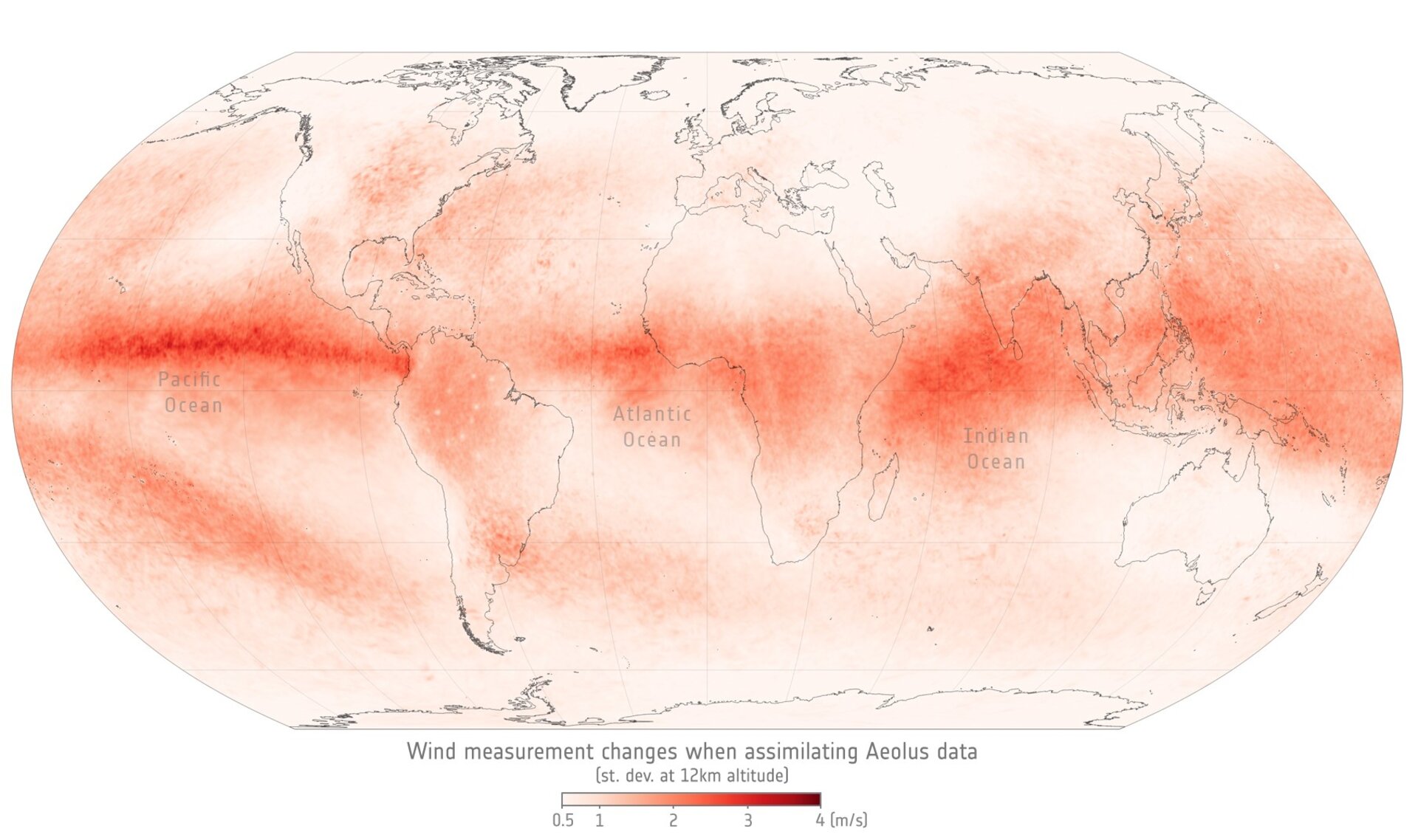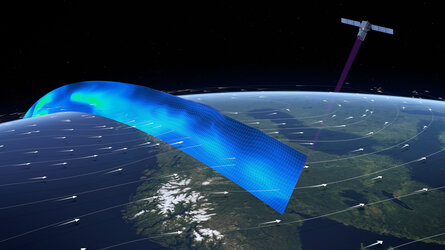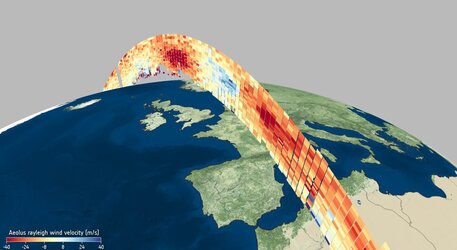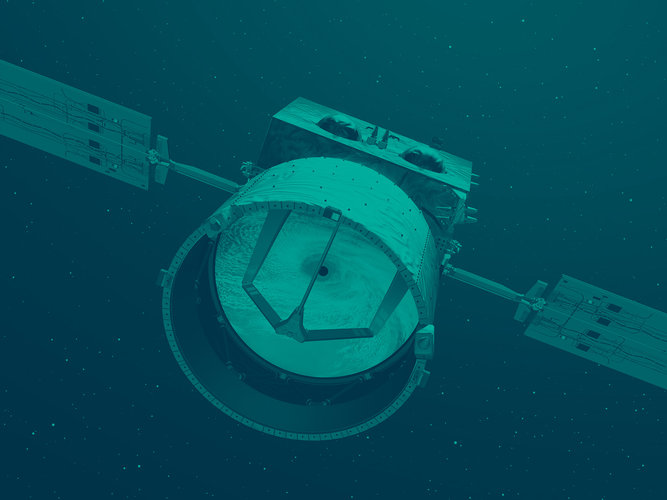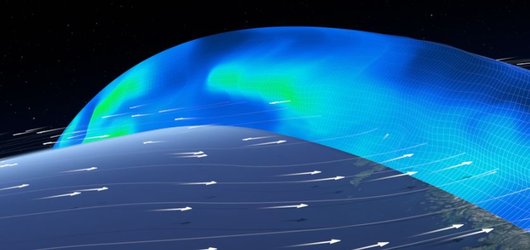Keeper of the winds shines on
Launched back in 2018, Aeolus has outlived its 36-month in-orbit design life – but going above and beyond, it continues to deliver excellent data. This shows that there’s life yet in the satellite, meaning ESA’s wind mission is now expected to continue shining a light on the wind for another year.
Heralding the start of the Aeolus Third Anniversary Conference in Taormina, Sicily, which highlighted the continued importance of this pioneering wind mission, the Aeolus Mission Manager, Tommaso Parrinello, said, “I believe that the best is still to come, and I’m pleased to announce that with a switch of the laser we are extending the lifetime of this remarkable mission hopefully for another year.”
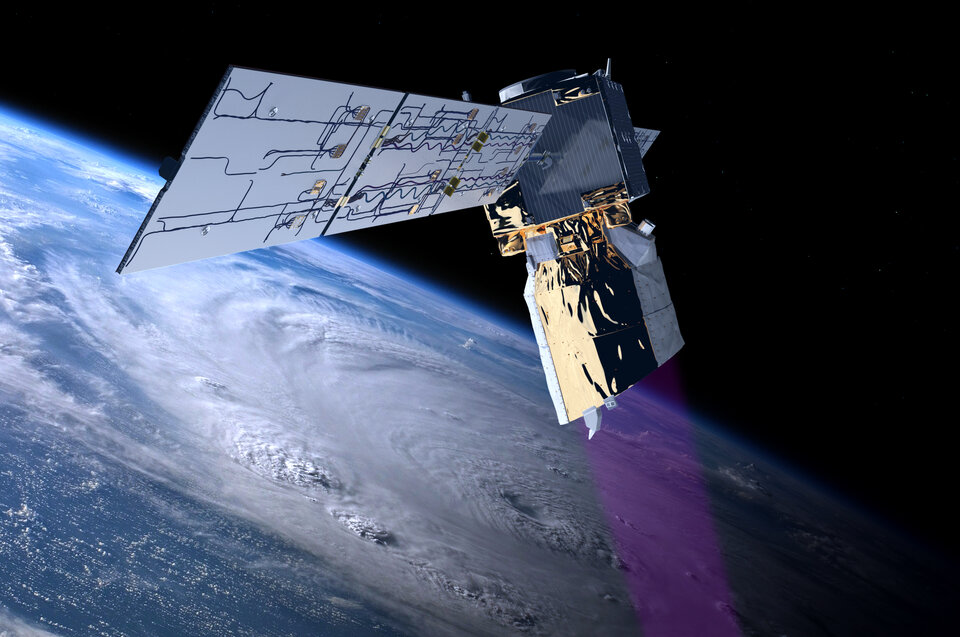
Named after Aeolus, who in Greek mythology was appointed ‘keeper of the winds’ by the Gods, Aeolus is a one-of-a-kind satellite that measures wind from space. It is one of ESA’s Earth Explorers missions, which use advanced space technologies to answer critical questions about Earth’s natural processes and the impact that human activity is having.
Pulses of ultraviolet light fired from Aeolus’ ALADIN laser towards Earth are reflected from air molecules and particles in the atmosphere. Two optical analysers measure the Doppler shift of the molecular scattering, ‘Rayleigh’, and scattering from aerosols and water droplets, ‘Mie’. By analysing these Doppler shifts, it is possible to estimate wind speed and direction at various altitudes worldwide, making Aeolus the first satellite mission to deliver profiles of Earth’s wind on a global scale.
The uses for Aeolus wind data are many, from predicting the weather and improving climate models, to tracking events in near-realtime, such as the recent Hunga Tonga volcanic eruption.
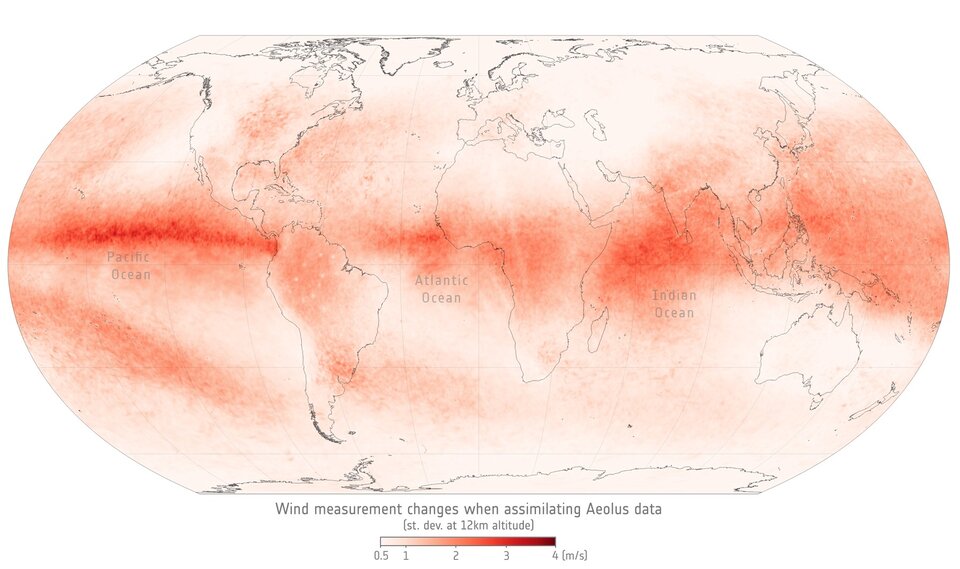
Despite exceeding its initial lifetime, meteorology experts at the Taormina conference expressed the value Aeolus data continue to have.
“Forecast Sensitivity Observation Impact shows that Aeolus is amongst the most important satellite missions, which is an impressive result for a demonstrator,” said Mike Rennie of the European Centre for Medium Range Weather Forecasts (ECMWF).
Nothing connects us quite like the weather. Whether it’s to understand what coat to wear, or to determine climate expectations tomorrow, being able to predict it as accurately as possible is key.
Although Mike showed that although the positive impact of the data obtained in 2019 was roughly twice as big as it is now, Aeolus is still proving useful for numerical weather prediction.
“Although the Rayleigh impact is gradually declining as the instrument noise increases, the Forecast Sensitivity Observation Impact shows that Aeolus is still beneficial,” added Mike.
Gemma Halloran of the UK Met Office, where an expanded Aeolus dataset will be operational in May, concurred, saying, “Almost all weather models improved with the assimilation of Aeolus data.”
Vivien Pourret of Météo France also presented data that put Aeolus amongst the best instruments for improving weather forecasts, third overall in terms of improvement per observation. He noted, “The goal is to operationally assimilate Aeolus data for as long as possible.”
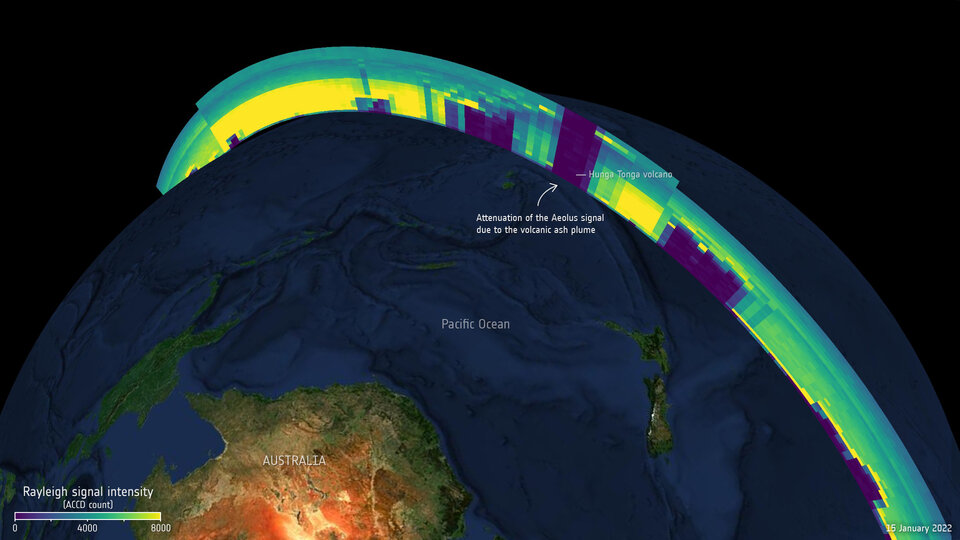
Aeolus helped track Hunga Tonga eruption
Aeolus is also proving helpful for tracking events such as volcanic eruptions, thanks to near-realtime data reaching the user within three hours via the Aeolus Virtual Research Environment. Earlier this year, scientists working on the Aeolus Data Science Innovation Cluster used the online visualisation tool to track the Hunga Tonga volcanic eruption.
On 15 January 2022, a huge blip, or drop, in the Aeolus signal over the region of the eruption suggested the plume of volcanic ash must have reached an altitude above the range of Aeolus, as shown in the image above. The image below uses data from three days later, from 18 January, and shows how Aeolus could track the volcanic plume widening and spreading westwards over Australia.
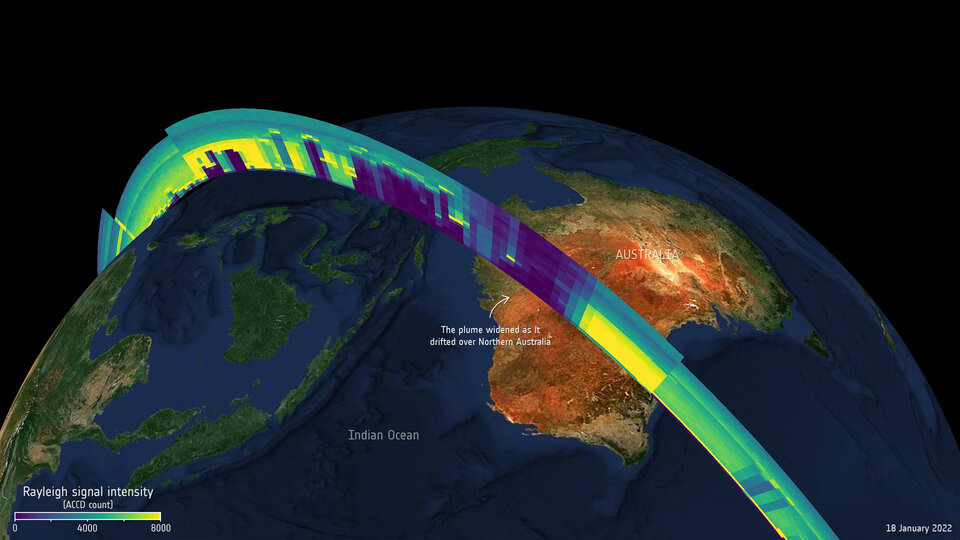
After increasing the satellite’s range of measurements, by the end of January the whole plume was clearly visible in the stratosphere.
The usefulness of such analyses was made clear by Anna Kampouri of the National Observatory of Athens, who in Taormina also showed how Aeolus data improved models of Mount Etna’s ash plume as it travelled across Greece in March 2021.
The effect is important to warn the airline industry of potential hazards, as encounters with ash clouds in high concentrations can reduce visibility and damage aircraft engines.

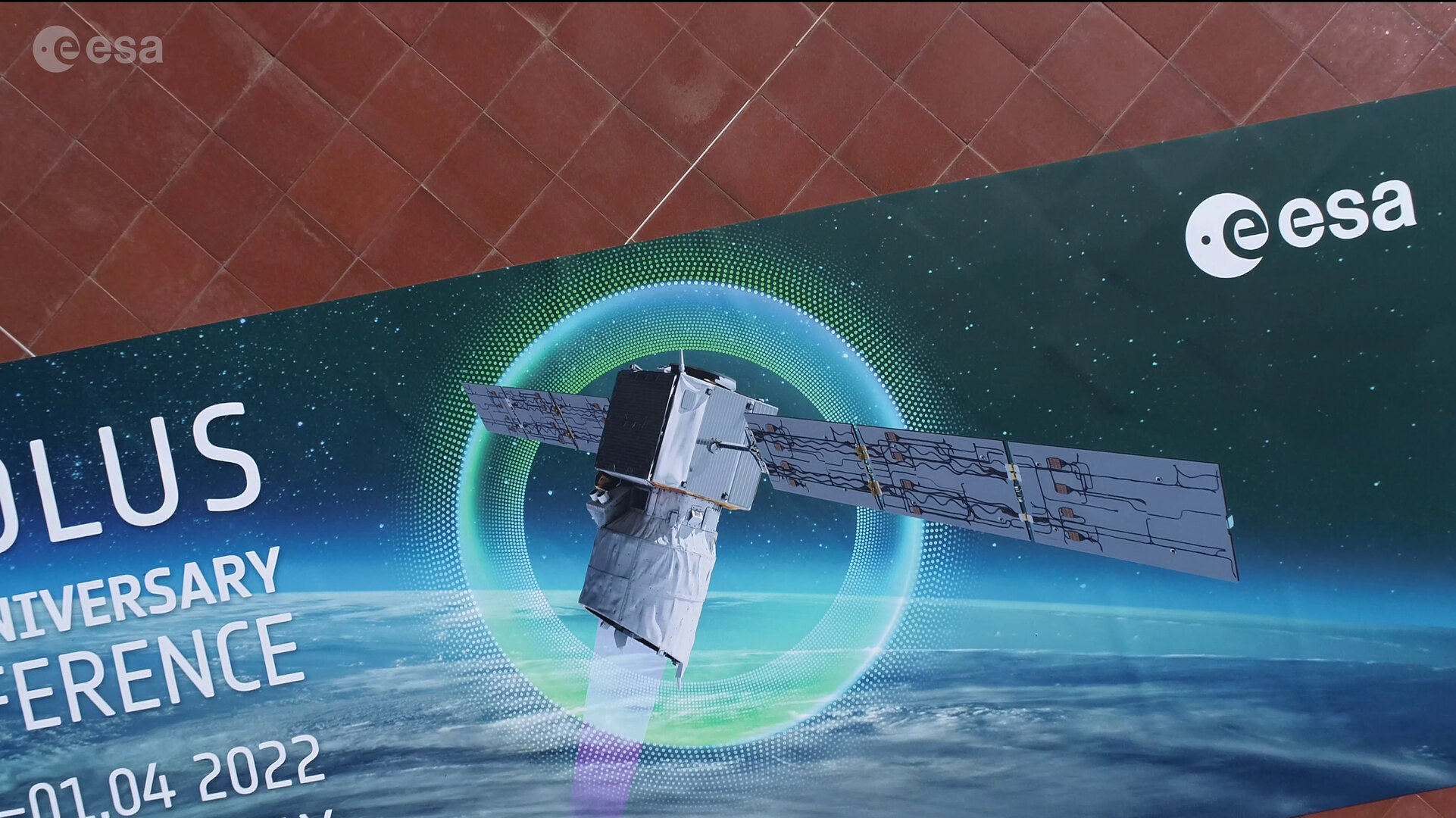
Access the video
The future is bright for Doppler wind lidars in space
While Aeolus is set for at least another year, discussions in Taormina inevitably led to potential follow-on missions. “The value of Aeolus is not only scientific, but also economic and societal,” said ESA’s Director of Earth Observation Programmes Simonetta Cheli in her opening address in Taormina. “Following the success of Aeolus and the operational assimilation of data into weather forecast models, it’s clear there is growing support for a follow-on mission.”
Join us at ESA’s Living Planet Symposium in Bonn
Being held on 23–27 May 2022 in Bonn, Germany, ESA’s prestigious Living Planet Symposium offers attendees the unique opportunity to hear first-hand about the most recent developments in the field of Earth observation. Attendees will be able to hear about the latest scientific findings on our planet and how observing Earth from space supports environmental research and action to combat the climate crisis, learn about novel space technologies and about the new opportunities emerging in the rapidly changing sector of Earth observation. This exciting event not only attracts scientists and academics, but also those working in the space industry, institutional stakeholders, data users, students and citizens – an amazing opportunity to all meet in-person after the Covid pandemic.
More information and registration details can be found at the Living Planet Symposium website.


